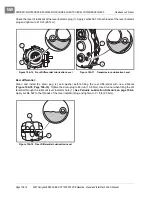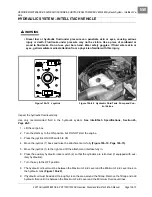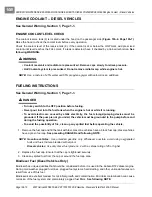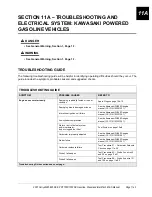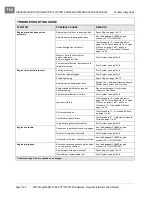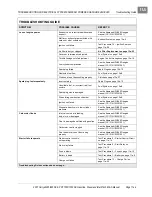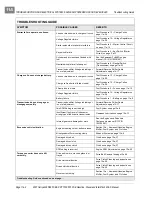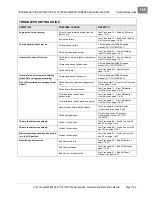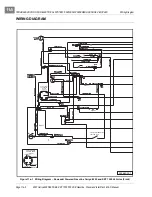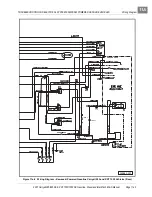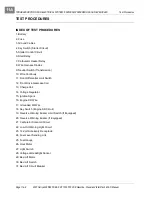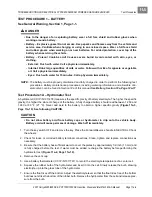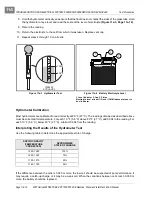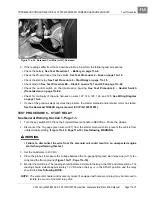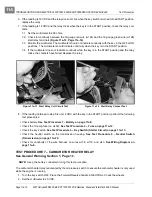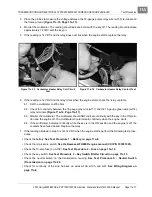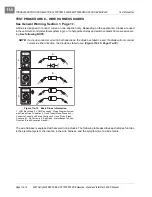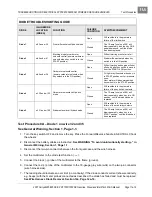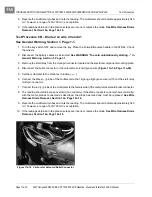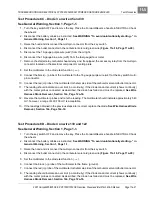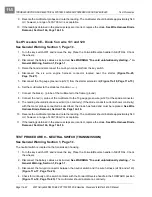
TROUBLESHOOTING AND ELECTRICAL SYSTEM: KAWASAKI POWERED GASOLINE VEHICLES
Test Procedures
2007 Carryall 295/295 SE & XRT 1550/1550 SE Gasoline, Diesel and IntelliTach M & S Manual
Page 11a-9
11A
TEST PROCEDURE 1 – BATTERY
See General Warning, Section 1, Page 1-1.
ý
DANGER
• Due to the danger of an exploding battery, wear a full face shield and rubber gloves when
working around a battery.
• Battery – Explosive gases! Do not smoke. Keep sparks and flames away from the vehicle and
service area. Ventilate when charging or using in an enclosed space. Wear a full face shield
and rubber gloves when working on or near batteries. For added protection, cover top of the
battery when servicing the vehicle.
• Battery – Poison! Contains acid! Causes severe burns! Avoid contact with skin, eyes, or
clothing.
- External: Flush with water. Call a physician immediately.
- Internal: Drink large quantities of milk or water. Follow with milk of magnesia or vegetable
oil. Call a physician immediately.
- Eyes: Flush with water for 15 minutes. Call a physician immediately.
NOTE:
The battery must be properly maintained and fully charged in order to perform the following test
procedures. Battery maintenance procedures, including watering information and allowable min-
eral content, can be found in Section 12a of this manual.
See Battery, Section 12a, Page 12a-17.
Test Procedure 1A – Hydrometer Test
A hydrometer (CCI P/N 1011478) measures the specific gravity of battery electrolyte. The higher the specific
gravity, the higher the state of charge of the battery. A fully charged battery should read between 1.250 and
1.280 at 80 °F (27 °C). Never add acid to the battery to obtain a higher specific gravity
(Figure 11a-3,
Page 11a-10)
.
See following CAUTION.
CAUT ION
• Do not allow battery acid from battery caps or hydrometer to drip onto the vehicle body.
Battery acid will cause permanent damage. Wash off immediately.
1. Turn the key switch OFF and remove the key. Place the Forward/Reverse handle in NEUTRAL. Chock
the wheels.
2. Check for loose or corroded battery terminal connections. Clean, tighten and replace connections as
necessary.
3. Be sure that the battery has sufficient water to cover the plates by approximately 1/2-inch (13 mm) and
is fully charged before the test. If water must be added, recharge the battery before performing the
hydrometer test
(Figure 11a-4, Page 11a-10)
.
4. Remove the vent cap.
5. Use a battery thermometer (CCI P/N 1011767) to record the electrolyte temperature of a center cell.
6. Squeeze the rubber bulb of the hydrometer and insert it into the cell. Slowly release the bulb, drawing
electrolyte up into the glass tube of the hydrometer.
7. Ensure the float rises off the bottom. Adjust the electrolyte level so that the float rides free of the bottom
but does not strike the bottom of the rubber bulb. Remove the hydrometer from the cell and release pres-
sure from the bulb.
Summary of Contents for IntelliTach XRT 1550
Page 2: ......
Page 22: ...1...
Page 54: ...4...
Page 60: ...5...
Page 90: ...6...
Page 114: ...8...
Page 118: ...9...
Page 196: ...11A...
Page 290: ...11C...
Page 468: ...13C...
Page 490: ...14...
Page 498: ...15...
Page 548: ...16...
Page 560: ...Club Car R NOTES...
Page 561: ...Club Car R NOTES...
Page 562: ...Club Car R NOTES...
Page 563: ......


